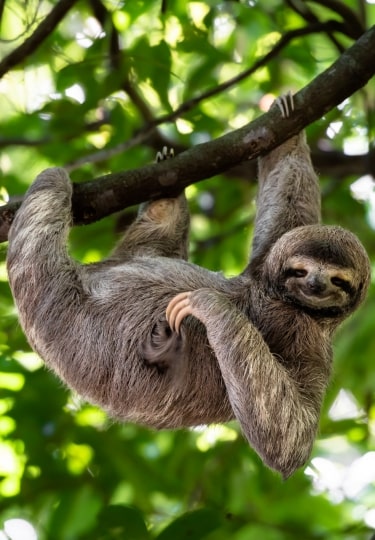Tropical, mountainous Costa Rica is known for many things. Dazzling biodiversity in its treasure trove of animals, birds, fish, and plant species, for one; this is where you’ll see glossy toucans perched in the trees and graceful macaws, scarlet against the bottle green of the rainforest.
Eco-adventures—hiking, white water rafting, river tubing, snorkeling—are another reason to visit. Then there are long, glorious beaches, cloud forests draped in ethereal mist, smoldering volcanoes, and high-altitude coffee plantations.
Above all, Costa Rica is known for its welcoming, happy people, “Ticos”, who appreciate the bounty among which they live and work hard to conserve it.
Here are 17 things Costa Rica is known for.
Macaws
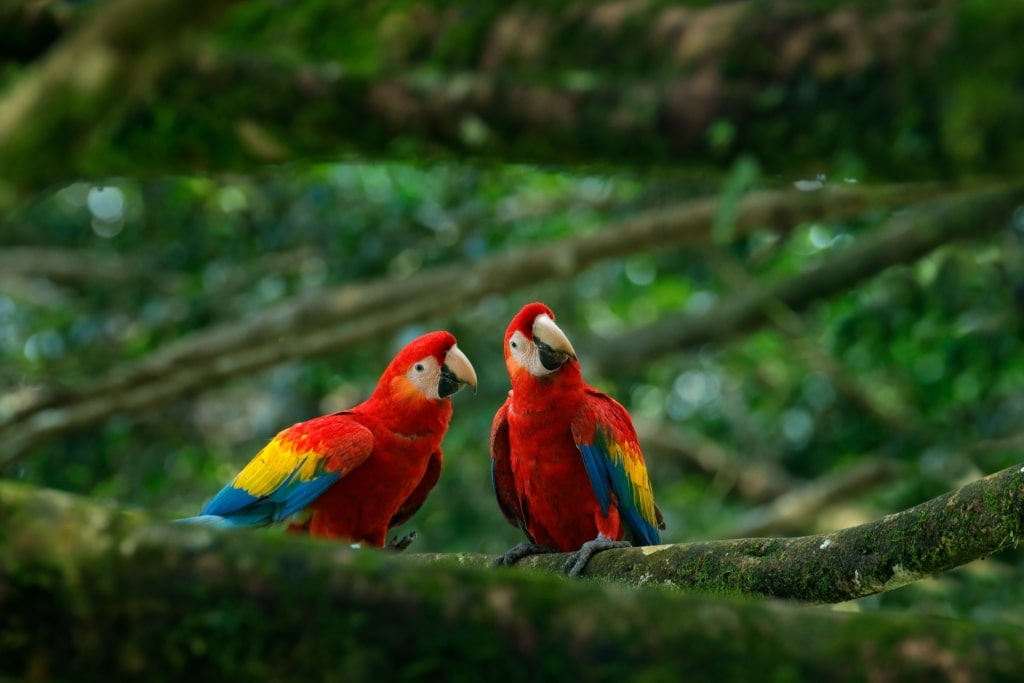
Macaws
Costa Rica is famed for its birds, especially its colorful macaws. Scarlet macaws, a blaze of bright red, blue, and yellow feathers, and the critically endangered green macaws are among the prettiest birds in Costa Rica’s rainforests. Look out for them soaring above the forest canopy in brilliant flashes of color.
At NATUWA Conservation Sanctuary, a wildlife refuge in the province of Puntarenas, you can get close to these sometimes difficult-to-spot birds and to monkeys, tapirs, and jaguars as you follow a guide along a nature trail.
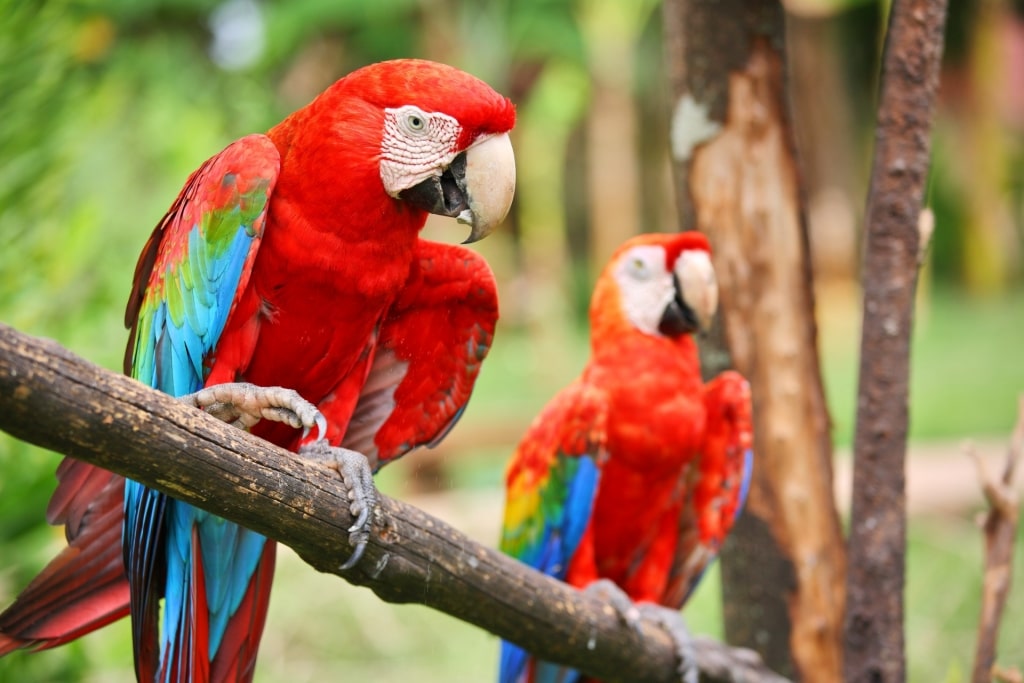
Macaws
The conservation group restores the birds’ natural habitat by planting trees, as well as building nests, and rehabilitating orphaned chicks. The sanctuary has a policy of releasing birds into the wild wherever possible.
Monteverde Cloud Forest Reserve
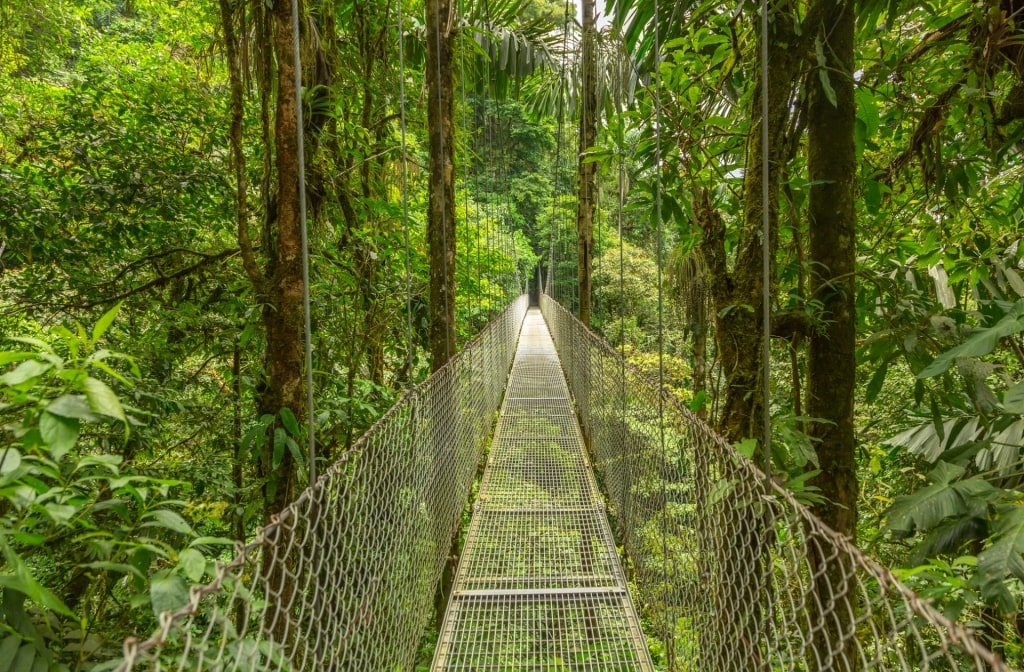
Monteverde Cloud Forest Reserve
In a country known for its many rainforests, Monteverde Cloud Forest Reserve is perhaps one of the best places to experience Costa Rica’s nature. Enveloped by clouds, the reserve exudes a dreamlike aura.
Its 35,000 acres shelter more than 100 species of mammal, and 400 species of bird, including the resplendent quetzal, a collage of blue-green, gold, and red feathers.
Look for the quetzal and rarely-seen jaguars, ocelots, and other animals as you wind past mist-shrouded orchids, oak, bamboo, and heliconia trees. In Monteverde, complement the natural wonders with man-made thrills.
Get a spectacular bird’s eye view of the rainforest by gliding through the treetops on a zipline and by traversing the Sky Walk, a series of bridges suspended in the tree canopy that sway as you cross.
Carara National Park
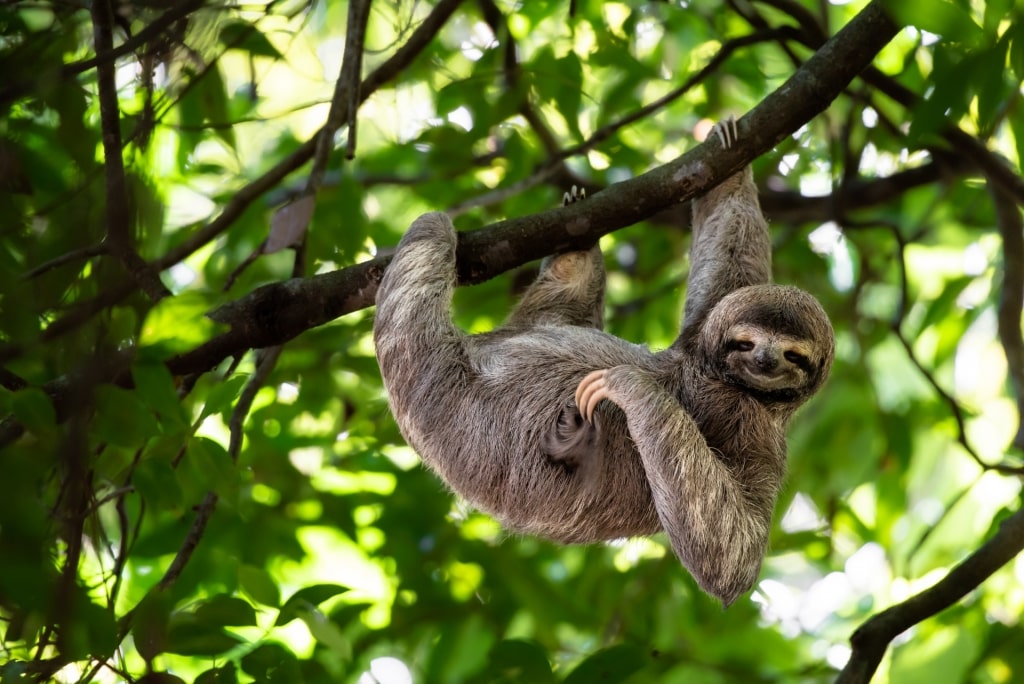
Sloth in Carara National Park
Enter Carara National Park, some 47 miles from the capital, San Jose, and walk one-and-a-quarter miles to the bridge over the Tarcoles River to discover the gnarly snouts and bumpy backs of American crocodiles sunning on the banks.
This, like all the national parks in Costa Rica, is a wonderful place to immerse yourself in wildlife and train your eyes to spot even the most elusive creatures.
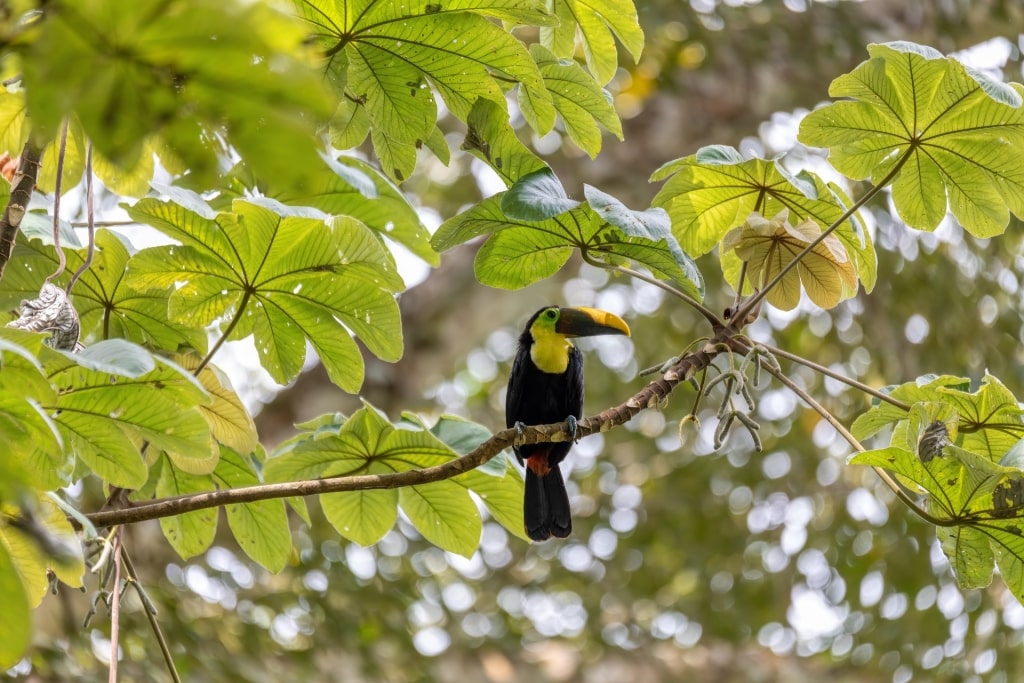
Toucan
Further along the leafy trails from the bridge, you’ll have a good chance of finding scarlet macaws, toucans, howler monkeys, and even sloths.
Coffee
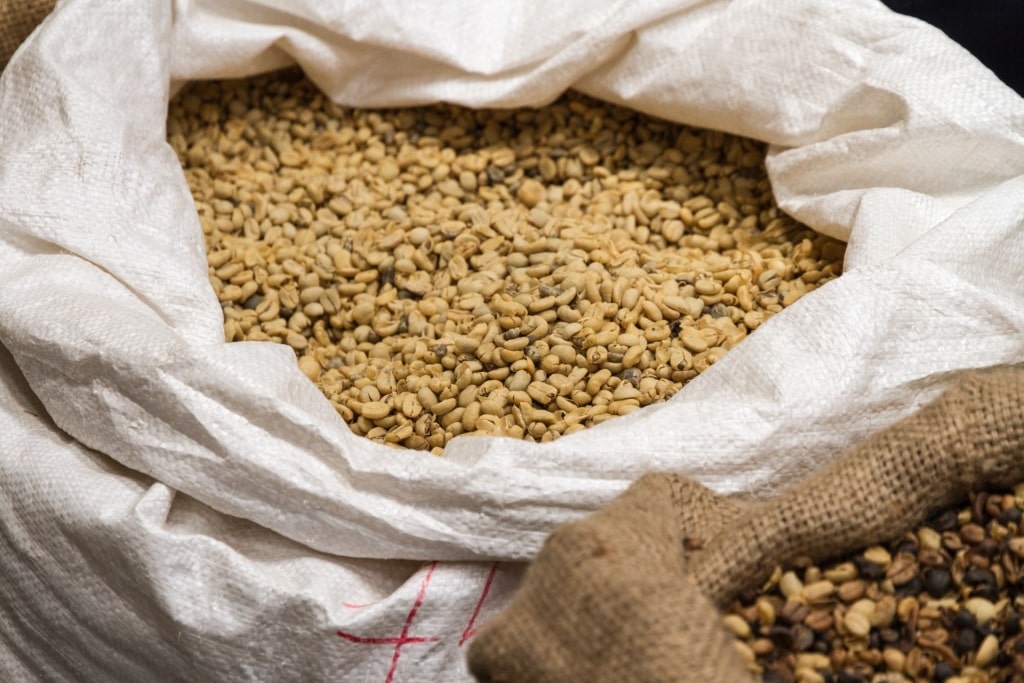
Coffee beans
Costa Ricans love their coffee so much that a 1989 law required local farmers to plant only high-quality Arabica beans.
Costa Rica is known for its coffee, grown in eight mountainous regions. The beans thrive on slopes where temperatures are moderate, rainfall heavy, and the fertile soil is rich with volcanic nutrients.
In Alajuela in the Central Valley, Doka Estate has been producing coffee on the slopes of Poas Volcano since 1940. On the guided tour, learn how plants are germinated and cultivated, see the grounds and production area, and sample several coffees.
There’s coffee to purchase at the gift shop and La Cajuela, the onsite restaurant, serves breakfast and lunch.
You can tour coffee plantations in Monteverde, too. If you like what you taste, buy Costa Rican coffee in supermarkets and gift shops to take home.
Poas Volcano
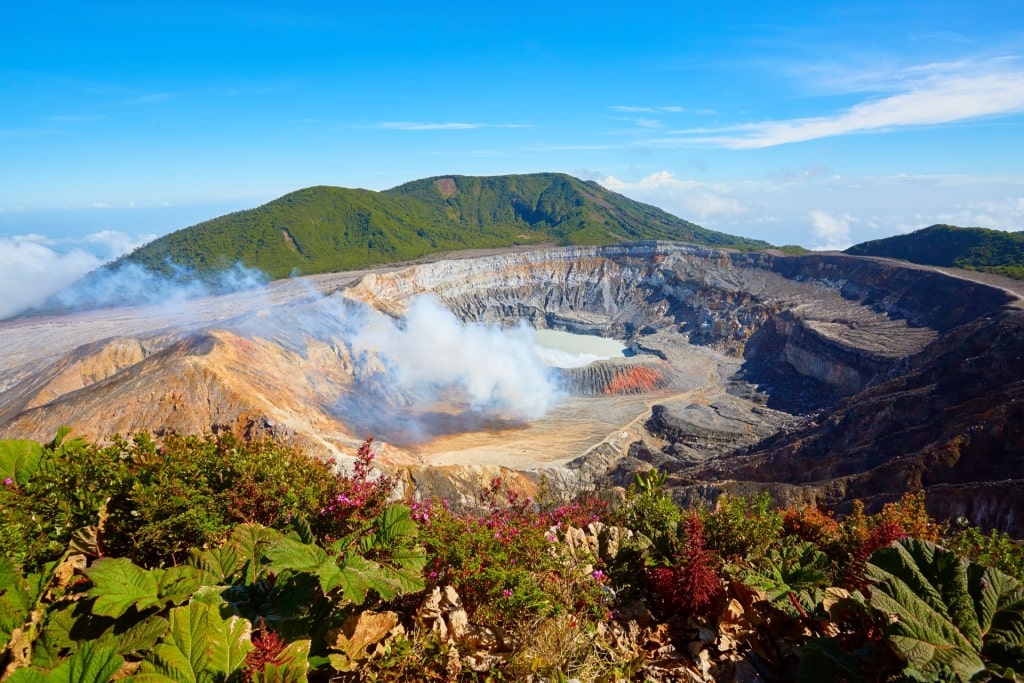
Poas Volcano
Costa Rica is dotted with volcanoes. Of the nation’s 67 volcanoes, 61 are dormant or extinct, while six hiss, bubble, and steam, including Poas and Irazu. Both can be reached within a one to two-hour drive from San Jose.
Poas, 30 miles from San Jose, is one of the most active. You can drive to within a 15-minute walk of a viewing platform that overlooks Laguna Caliente, the mile-wide crater filled with acidic water, 1,000 feet below. It’s a dramatic sight.
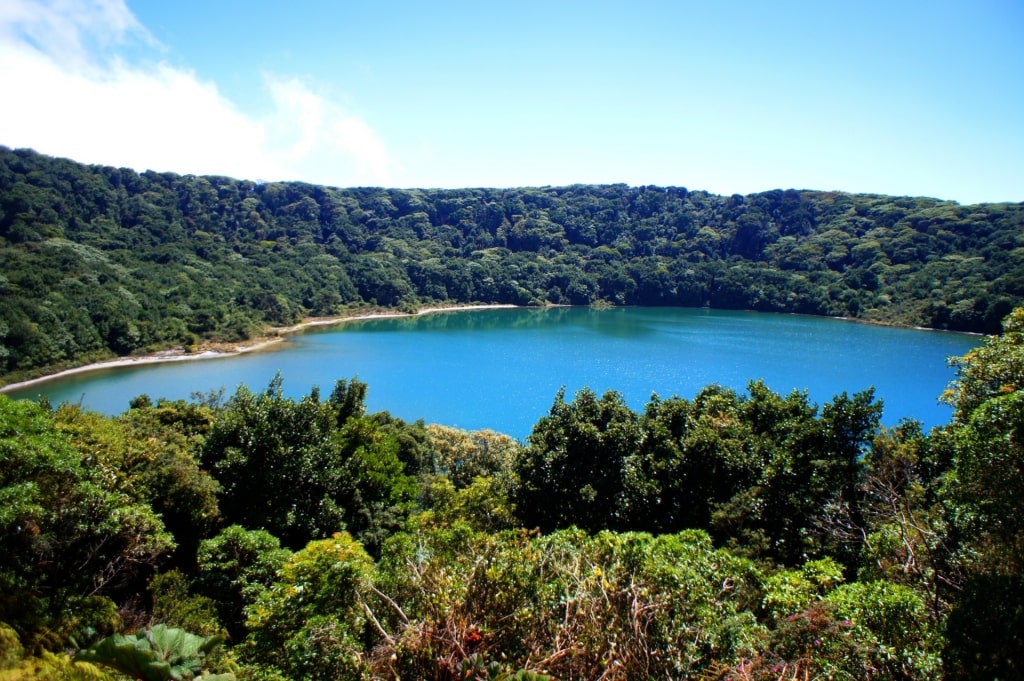
Botos Lagoon
The lake changes from emerald green to grayish-white when the acid levels fluctuate, and sometimes geysers spray sulfurous water into the air. To walk to the second crater lake, follow the Botos Lagoon trail for about one mile.
Sloths
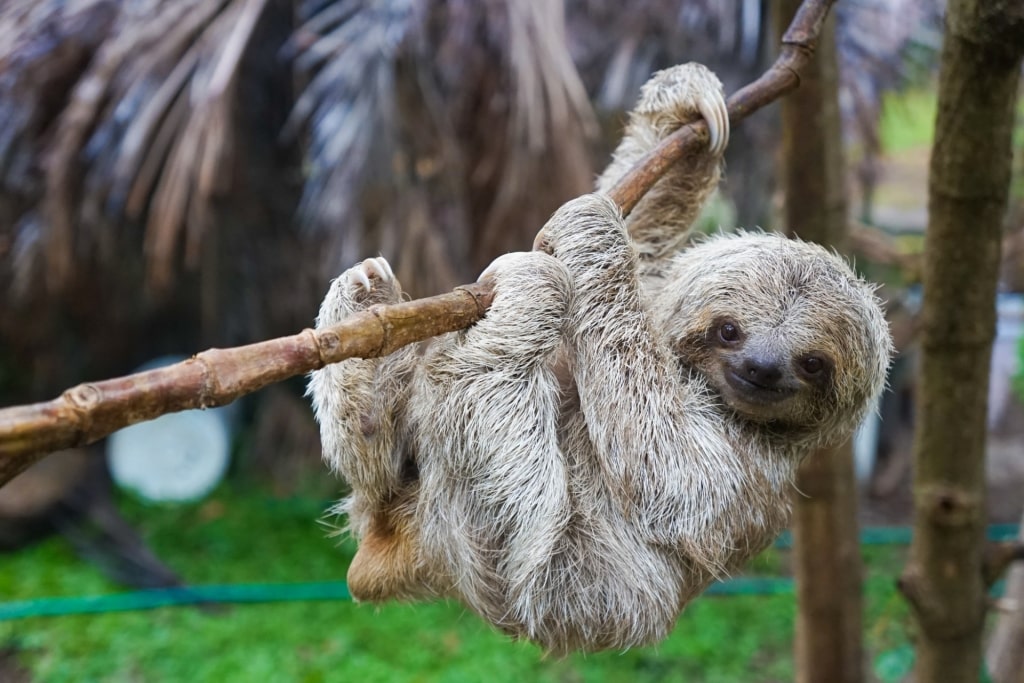
Sloth
Costa Rica is known for its endearing sloths, one of the country’s most fascinating animals. Two- and three-toed sloths inhabit the nation’s rainforests, living in the tree canopy.
With arms twice as long as their legs, sloths can reach leaves to eat without even moving from tree to tree. They sleep, curled into a ball, for 15 to 18 hours a day and move as if in slow motion when awake.
It’s hard to spot sloths in the wild, but at the Sloth Sanctuary in Limon Province near Cahuita, you see them up close in enclosures. The sanctuary rescues sloths from inhospitable environments and rehabilitates and releases them when possible.
If you’ve fallen in love with these harmless, furry creatures, then consider a symbolic adoption. Your fee helps the organization, and you receive an adoption certificate and a plush sloth toy.
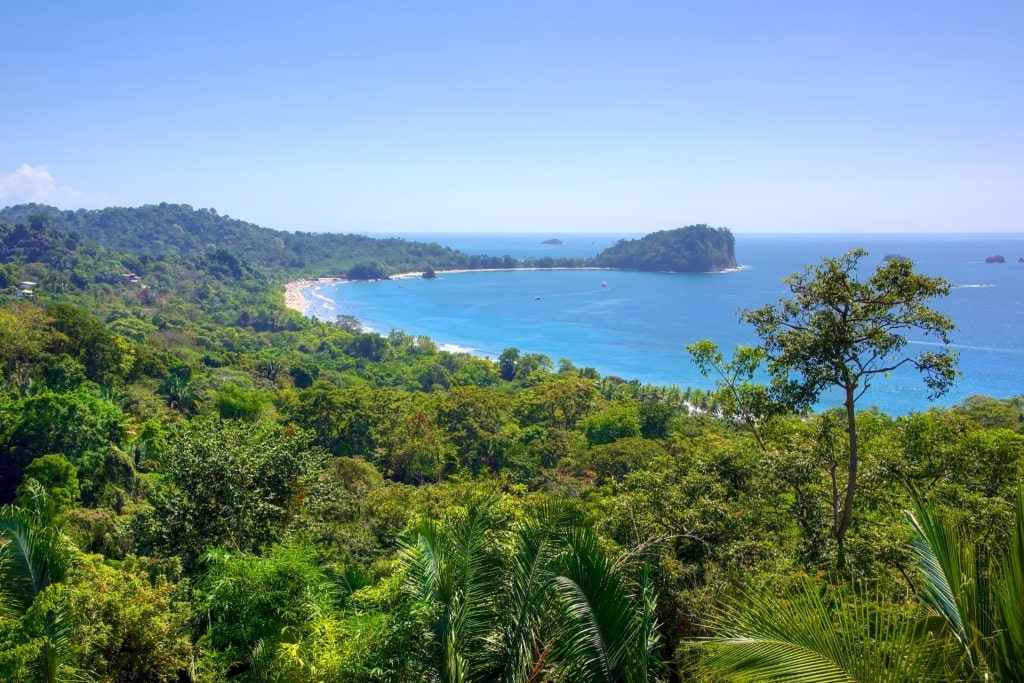
Manuel Antonio National Park
Among the places you may be able to catch sight of sloths in the wild are Manuel Antonio National Park, Tortuguero National Park, and on a boat ride of the Tortuguero Canals.
Cahuita National Park
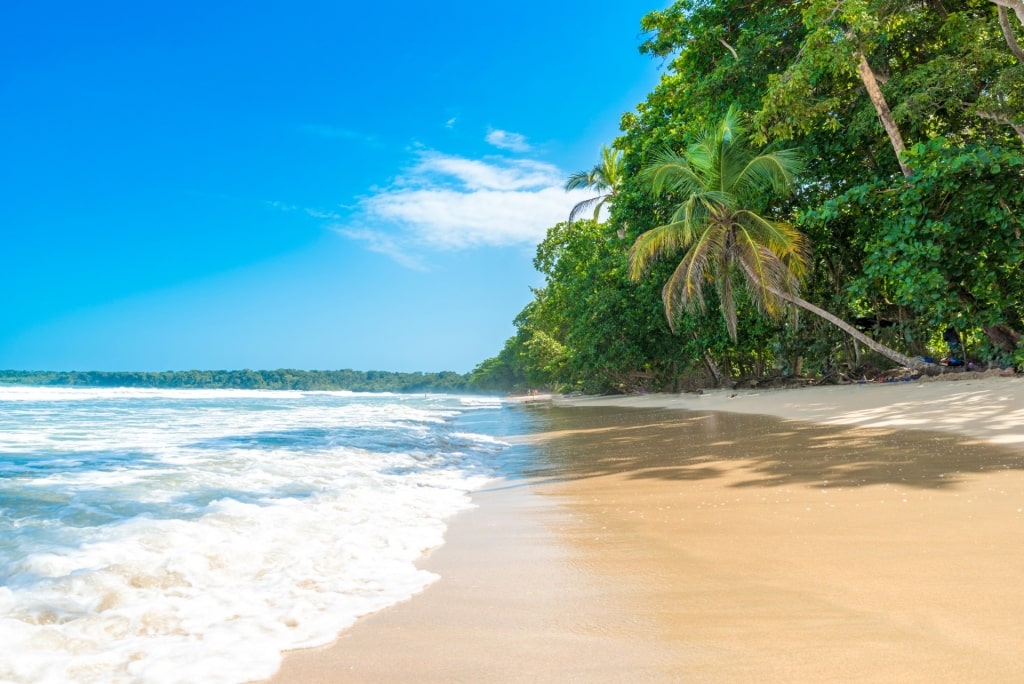
Cahuita National Park
In Costa Rica, you can enjoy protected rainforest and time on the beach in a single outing. Cahuita National Park in Cahuita rewards you with everything in one place: reefs, beaches, and a rainforest.
Snorkelers float above dazzling elkhorn, brain, and other corals, spotting lobsters, rainbow-colored fish, manta rays, and eels. After sunning on the white-sand beach lined with palm trees, allow time to hike inland.
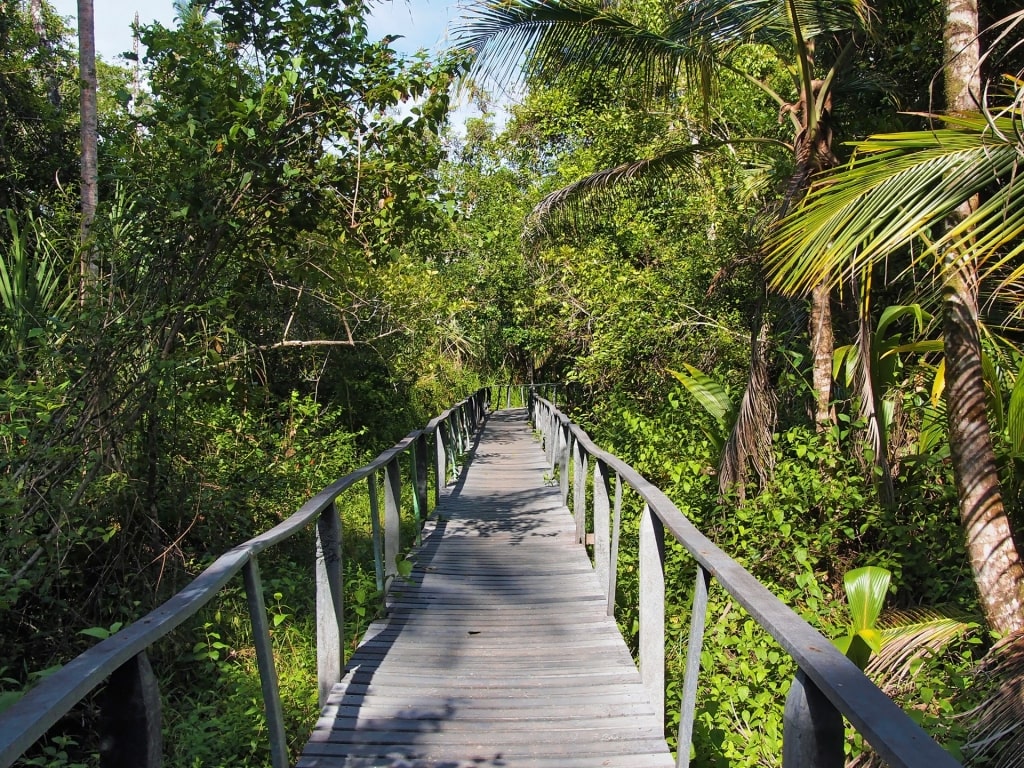
Cahuita National Park
Along the lush trails, look in the tree branches for sloths, toucans, howler and capuchin monkeys. At the mouth of the river, you’re likely to see caimans.
Tortuguero Canals
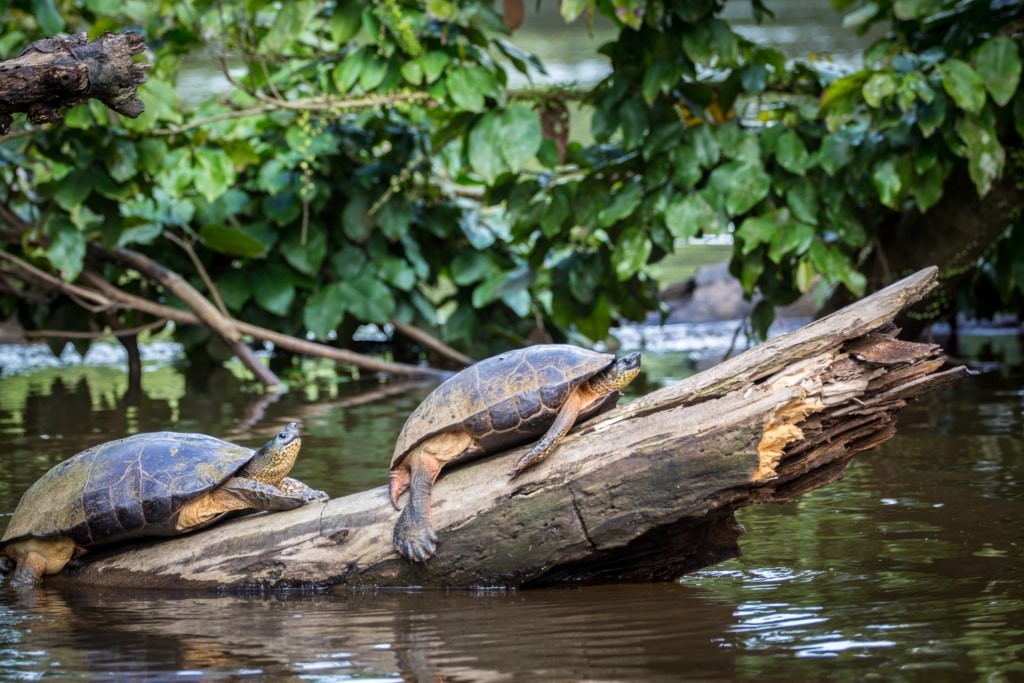
Tortuguero Canals
Some of Costa Rica’s best wildlife viewing is in Tortuguero National Park and along the Tortuguero Canals, known as one of the best places to visit in Central America.
The region takes its name from the Spanish word “tortugas”, or turtles. In season, leatherbacks, hawksbill, and green sea turtles come ashore to lay eggs along the beaches.
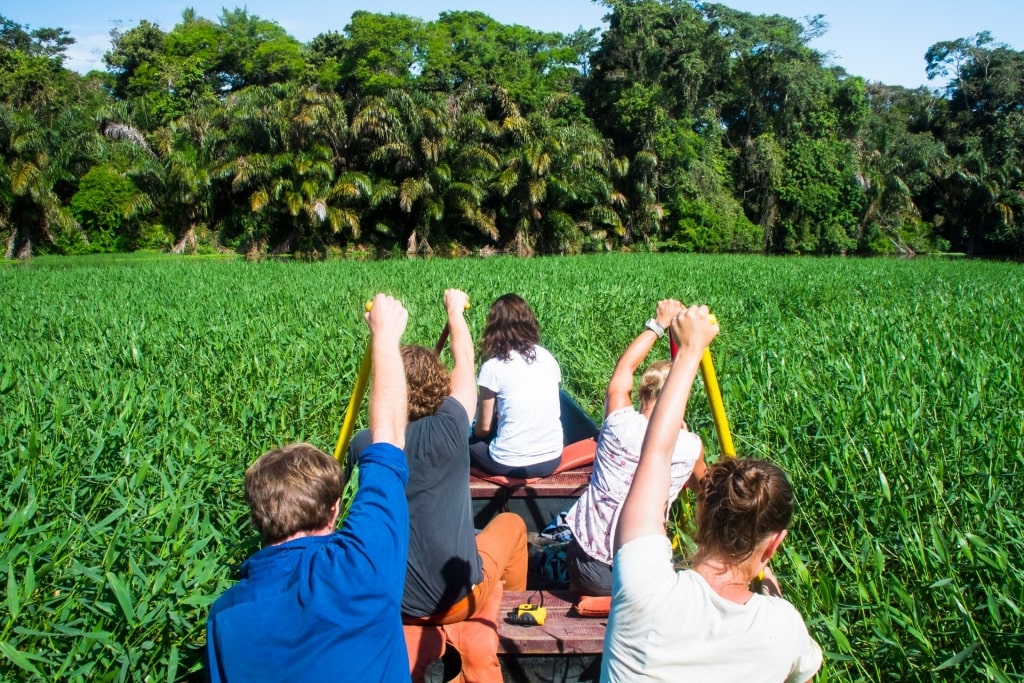
Turtles in Tortuguero Canals
On the slow, peaceful boat trip through the maze of inland canals, some natural and some man-made, you can spot parrots, keel-billed toucans, slaty-tailed trogons, howler monkeys, iguanas, river otters, caiman, and if you have keen eyesight, sloths, high in the trees.
River Rafting
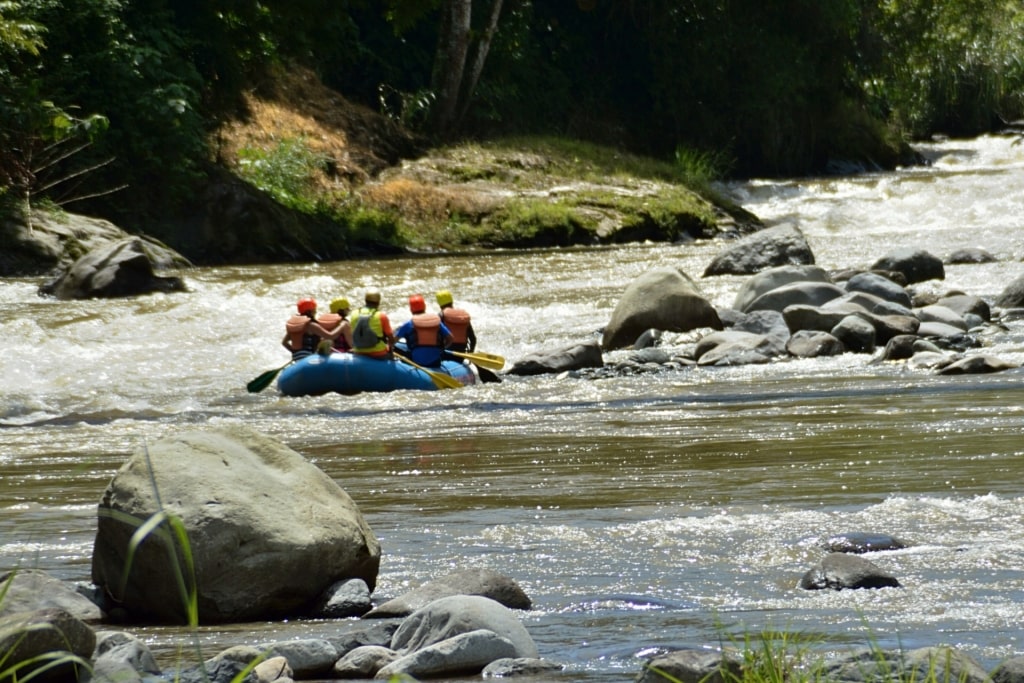
River rafting in Costa Rica
Rafting is a popular activity in Costa Rica. A day outing on the Reventazon River, accessible from Puerto Limon, gives you gorgeous rainforest scenery plus the thrill of paddling through whitewater.
Led by guides, you maneuver class I and II rapids and maybe a rushing, foaming class III on the Florida or Carmen sections.
In between the adrenaline rushes, there’s time to savor the lush green trees, look for parakeets, toucans, and howler monkeys.
Read: Best Places to Go White Water Rafting
The Veragua Rainforest
At the 3,400-acre Veragua Rainforest Research & Adventure Park, listen to the soothing splash of a waterfall and the whooping cries of zipliners gliding through the treetops. Veragua enables you to experience the rainforest in several ways.
Along with the thrill of ziplining, you can walk trails cut through the thick foliage, and ride the Sky Gondola, a cable car that lifts you into the lush canopy. Discover the rainforest’s inhabitants up close by admiring reptiles in the Terrarium exhibit.
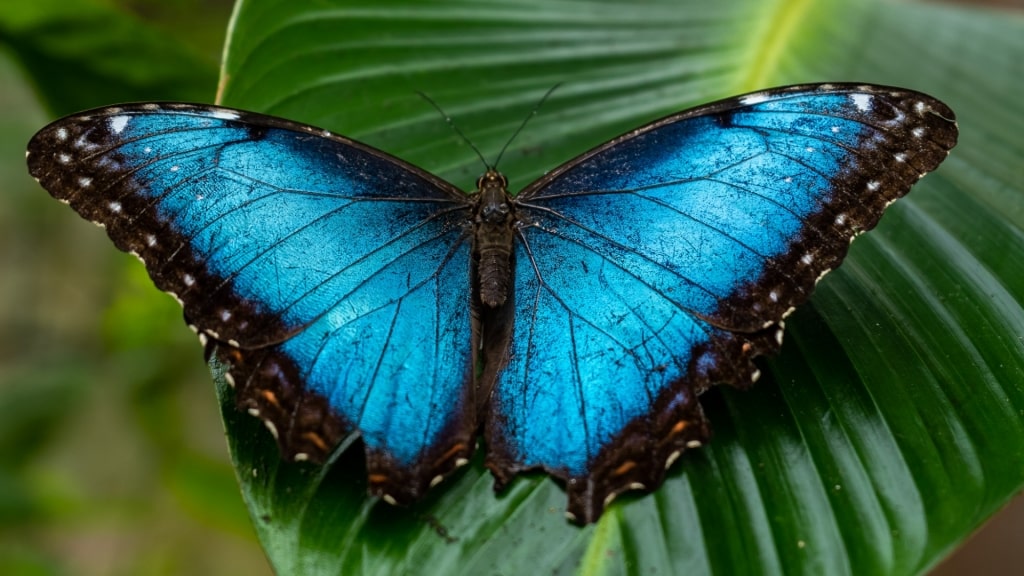
Butterfly
You’ll also see brightly colored frogs that normally only emerge at night in a dimmed gallery, and enjoy the spectacle of hundreds of butterflies flitting about in a butterfly garden.
Irazu Volcano
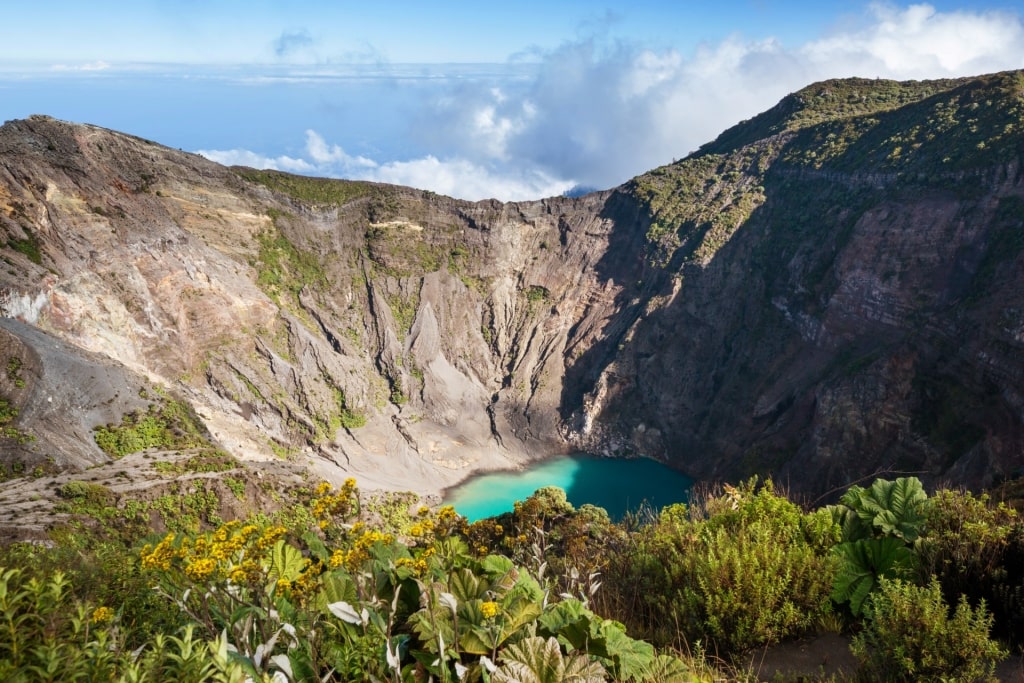
Irazu Volcano
Irazu, Costa Rica’s tallest volcano, rises 11,260 feet and is situated in Irazu Volcano National Park in Cartago Province, about one-and-a-half hour’s drive east of San Jose.
Like Poas, Irazu is easily accessed. Instead of hiking, you can drive to the Visitor Center and walk a short path to view the main crater, an impressive 3,444 feet wide.
It’s worth walking the half-mile path beyond the main crater to view the other, smaller craters. Because of the high elevation, it’s cold at Irazu so be sure to wear a warm jacket.
Crocodiles
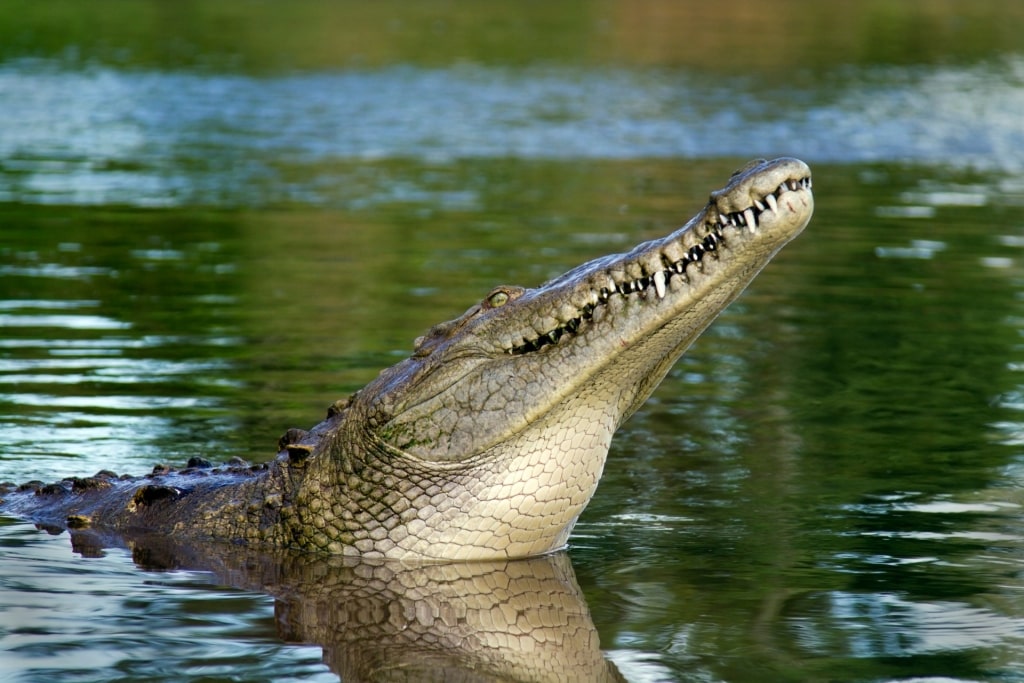
Crocodile
Stars (or villains) of jungle adventure films, crocodiles, with their fearsome toothy grins, inspire respect and fear. The Tarcoles River, which empties into the Gulf of Nicoya, gains fame as among the most croc-infested rivers in the world.
Although you can see crocodiles basking on the river banks as you cross the Tarcoles River Bridge, from a boat, the view is better. Guides will point out scores of the prehistoric reptiles, plus herons, kingfishers, whistling ducks, jacanas, and other birds.
Chocolate
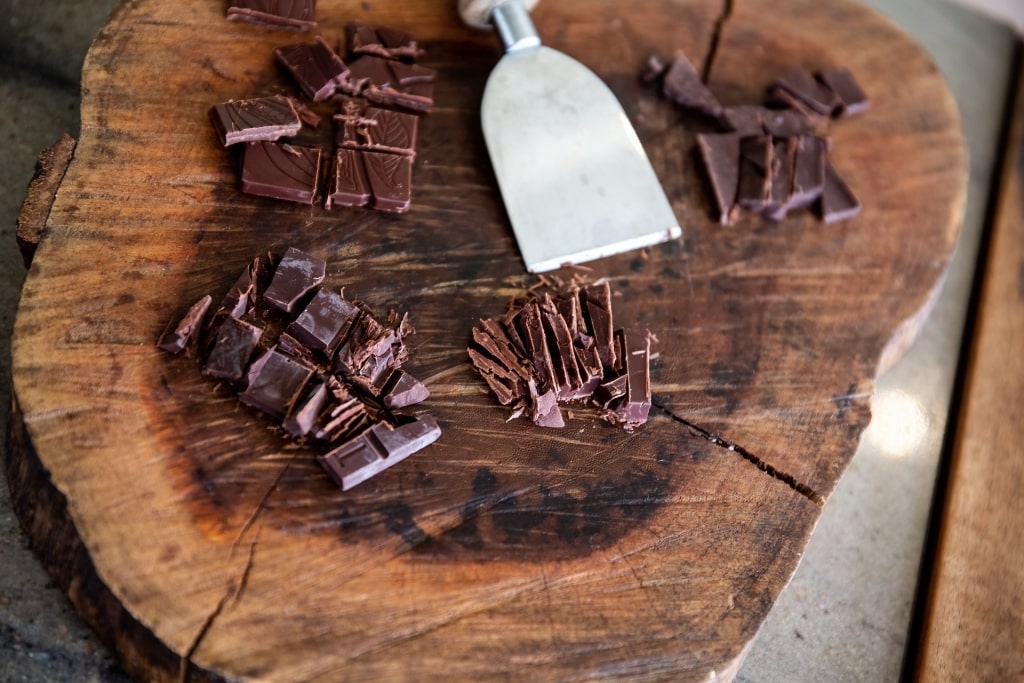
Chocolate
The use of chocolate in Central America dates back centuries. As Aztecs from Mexico, and Maya and Incas from Peru migrated to the region now known as Costa Rica, they brought with them cacao beans and the skills to produce chocolate.
The indigenous peoples used cacao beans like money, trading them for goods, and using the chocolate in ceremonies and for medicinal purposes.
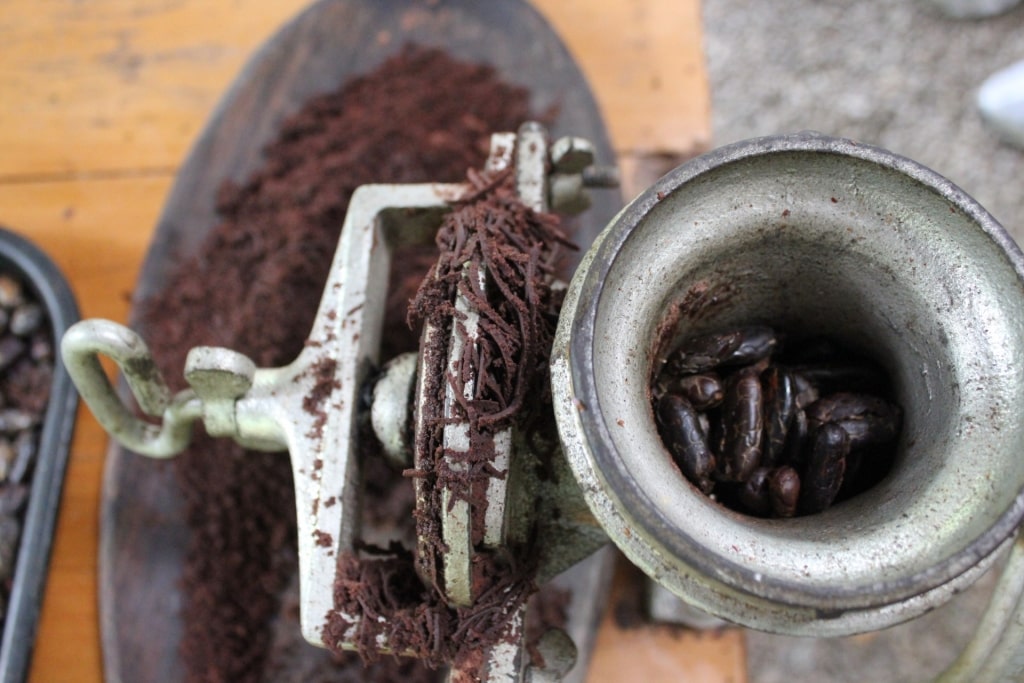
Chocolate
The Bribri tribe members still grow cacao on their Indigenous land, where they offer tours. You can learn about the history of cacao and how the bitter bean is transformed into sweet chocolate.
Gorgeous Beaches
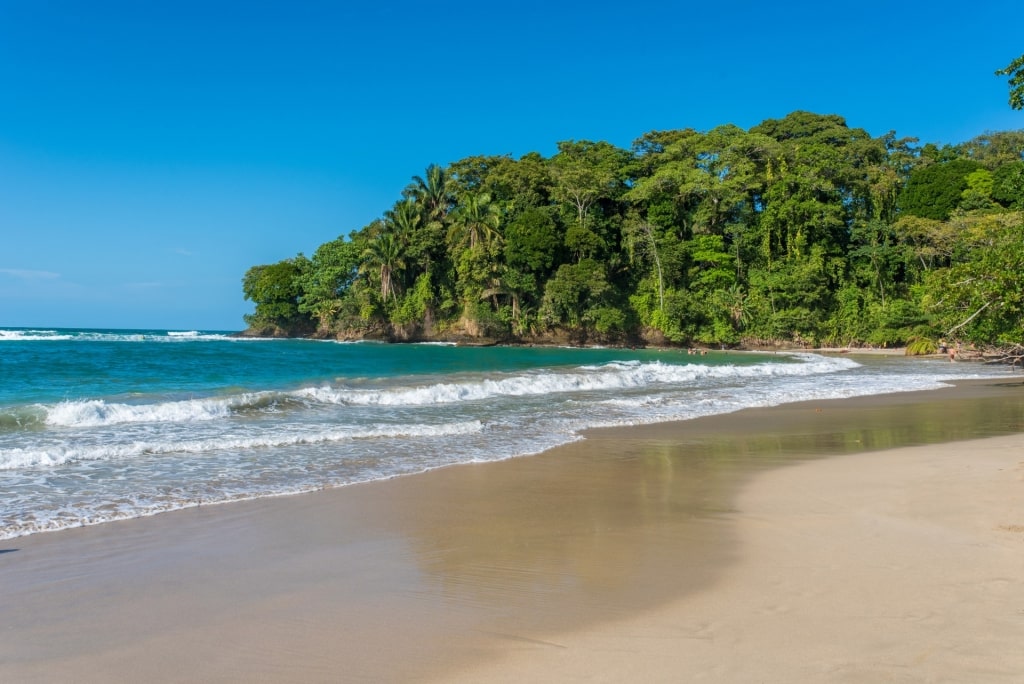
Playa Punta Uva
Long, sandy beaches are one of Costa Rica’s prime draws. Playa Punta Uva, lined with palm and almond trees and tropical vegetation, rates among the prettiest beaches on Costa Rica’s Caribbean coast. This beach is divided into two, separated by a small peninsula with a trail.
When walking the path between the beaches, look for the resident sloths. Nearby vendors rent kayaks and paddleboards. For lunch, try the typical Costa Rican dishes from eateries in town.
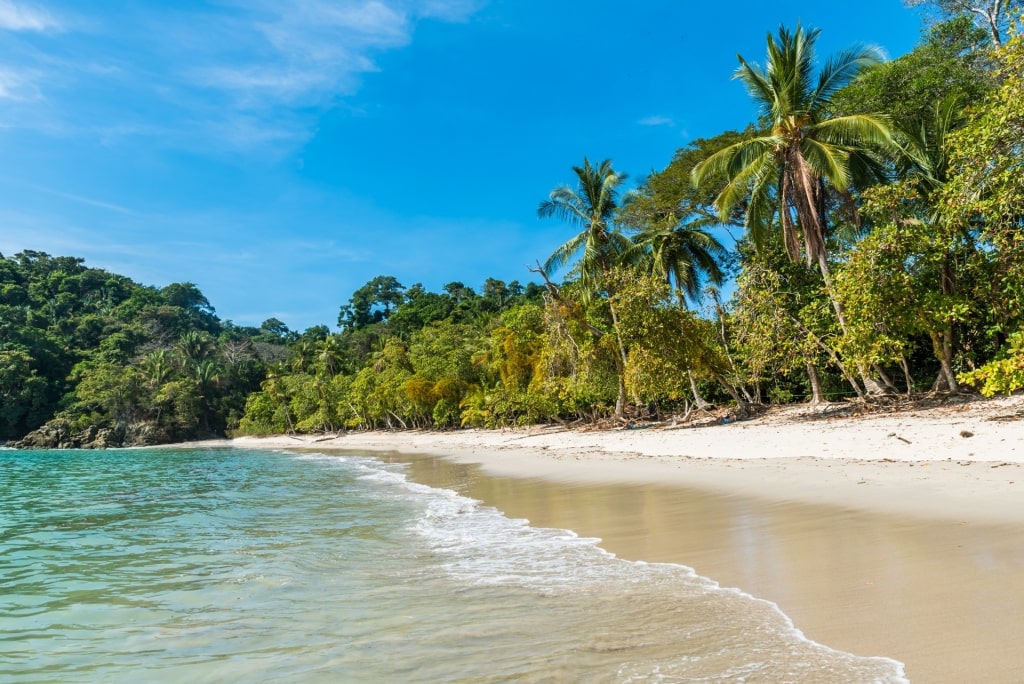
Manuel Antonio National Park
Manuel Antonio National Park on the Pacific Coast has sparkling white sand beaches backed by dense rainforest. Enjoy a guided hike, looking out for tiny, jewel-like frogs, sloths in the trees, and cheeky-faced capuchin monkeys.
If you head into the warm water for a swim and leave a picnic in your beach bag, don’t be surprised if you’re joined by curious racoons.
Read: Best Beaches in Central America
Fragrant Orchids
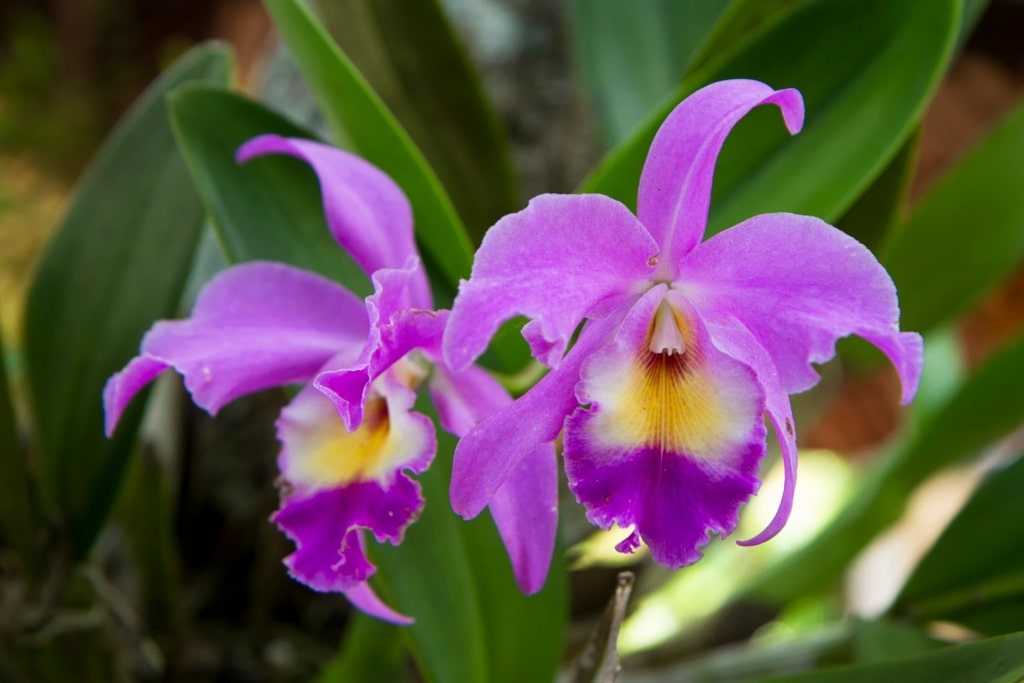
Orchids
Costa Rica’s rainforests bloom with 1,300 species of the fragrant flower. La Guaria Morada, a delicate purple orchid, blossoms between January and April, and is said to bring good luck. It reigns as the national flower.
Situated in a tropical dry forest in La Garita, Alajuela, the Botanical Orchid Garden enchants with many different species of orchids in the gardens.
You can also explore nurseries where hybrid orchids are produced, and species cultivated. As you walk trails through the flower-bedecked gardens, you might also see toucans and hummingbirds.
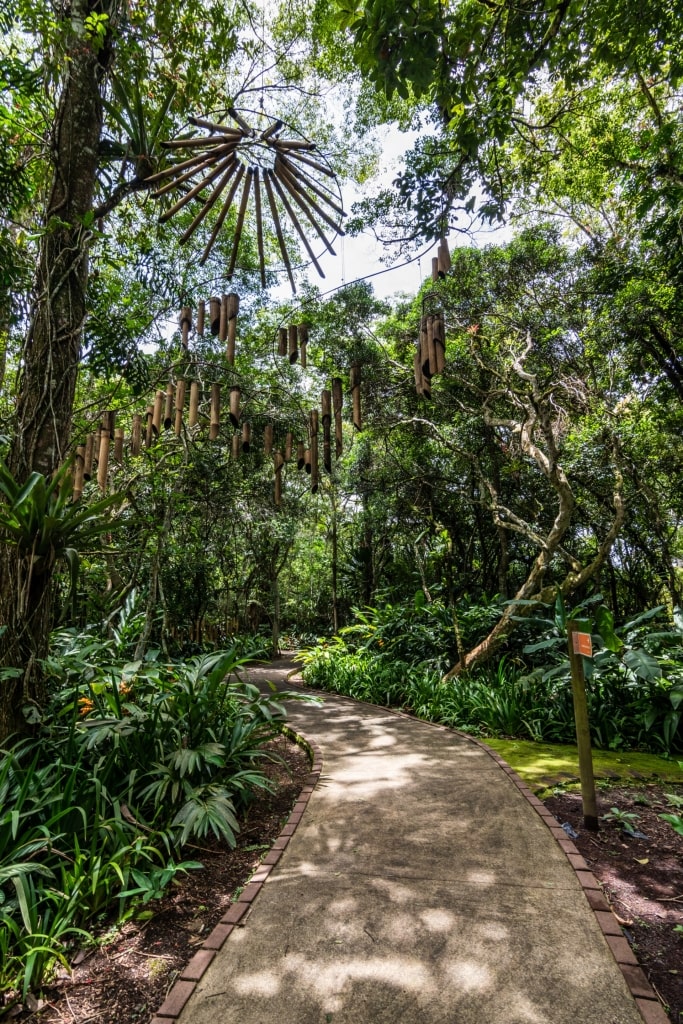
Lankester Botanical Gardens
Additional orchid gardens include Monteverde Orchid Garden and Lankester Botanical Gardens, in Cartago, near Irazu Volcano.
Hearty Food
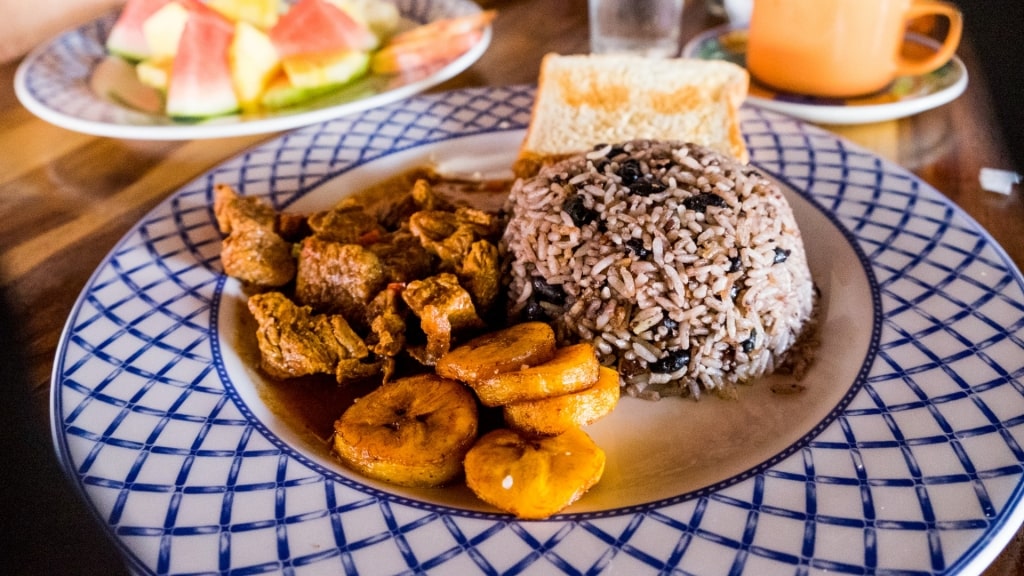
Gallo pinto
Be sure to try some tasty traditional Costa Rican food during your visit. A popular breakfast item, gallo pinto, Costa Rica’s national dish, translates to “spotted rooster.”
Cooks season the rice and beans (either black or red) with garlic, onions, peppers, and a heavy dose of cilantro. Families serve the dish at breakfast with eggs and as a side dish at other times.
For a filling soup, try sopa negro, a black bean soup cooked with onions, peppers, and garlic and topped with chopped hard-boiled eggs and avocado slices.
Seafood lovers should order fried whole snapper, langoustine, freshwater prawns, grilled corvina, and other fresh fish.

Tres leches
For dessert, try tres leches, a sponge cake made with evaporated milk, heavy cream, and sweetened condensed milk, popular across Central America.
Another popular milk-based dessert is arroz con leche, a rice pudding cooked with cream and condensed milk and flavored with cinnamon and cloves.
Firewater

Cacique Guaro Photo by Aleat88 on Wikimedia Commons, licensed under CC BY-SA 4.0
One of the most popular alcoholic drinks in Costa Rica is Cacique Guaro, a potent, sugar cane liquor usually served with fruit juice or soda.
Cacique Guaro is the legal version of the firewater once cooked up in home stills, known as moonshine, “chica”, or “aguardiente”, translating as “water that burns”.
To stop this illegal production, the government approved a legal version, Cacique Guaro, sold in both 60-proof and 70-proof varieties.

Batido
If alcohol and tropical heat don’t mix for you, cool off with a non-alcoholic batido, the Costa Rican version of a smoothie, blended with ice and tropical fruits including pineapples, papayas, mangos, or strawberries.
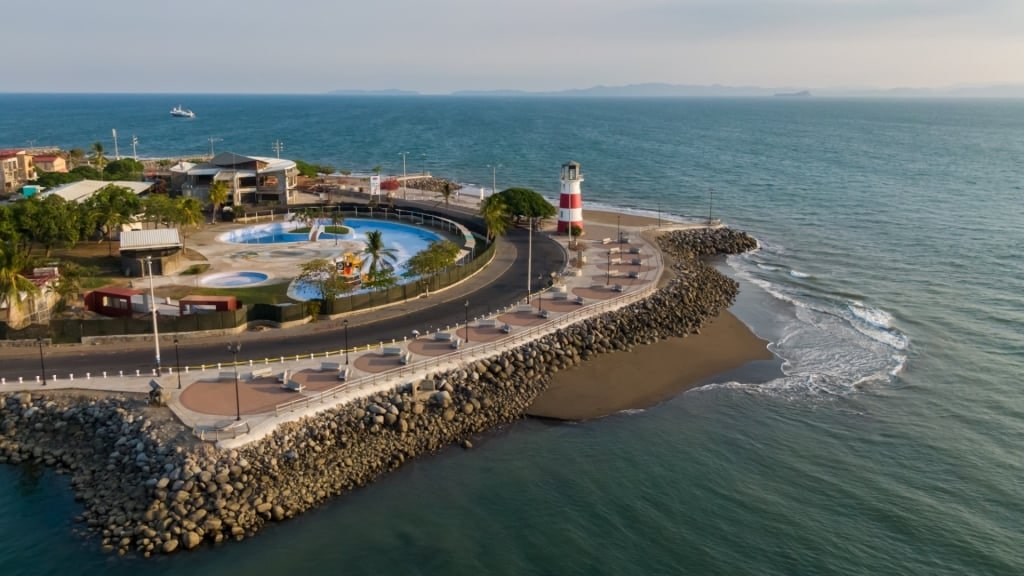
Puntarenas
Inspired to explore Costa Rica? Browse Celebrity’s cruises to Costa Rica and plan your tropical adventure.
